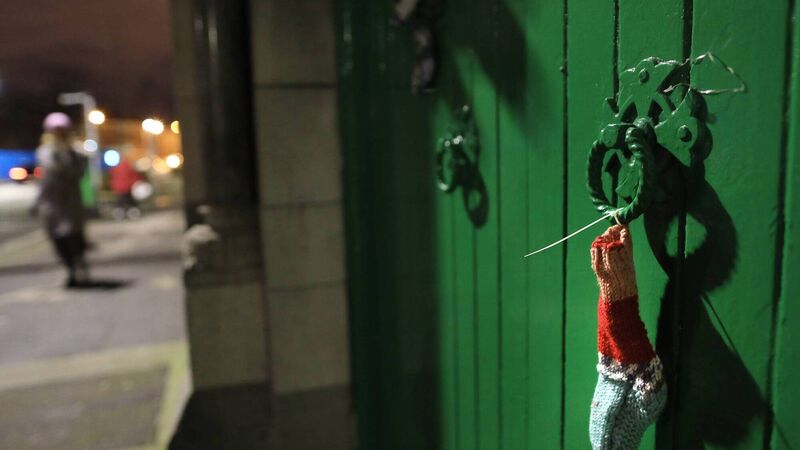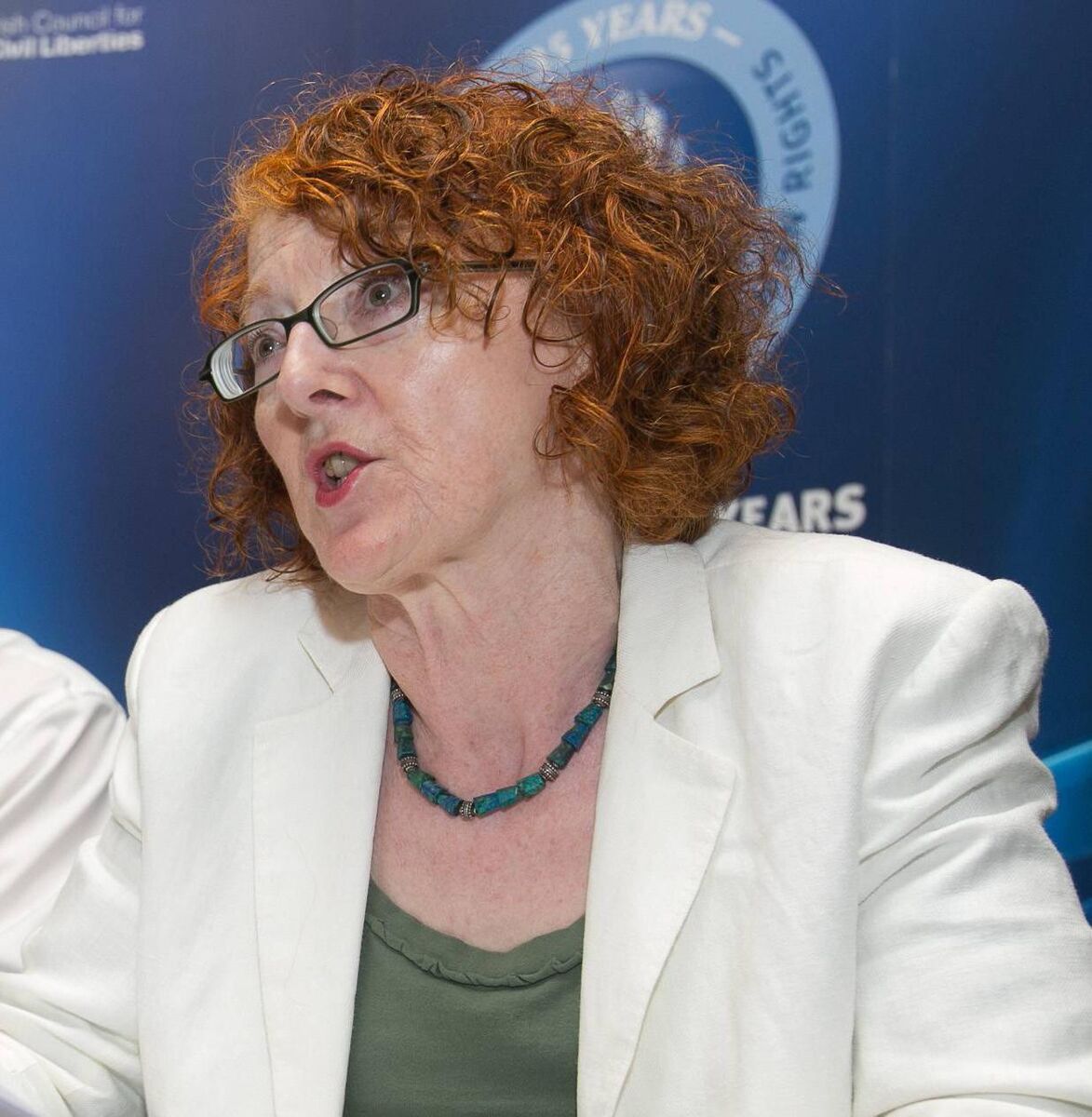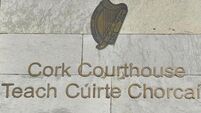Magdalene Laundries and symphysiotomy scandal survivors share painful history

A knitted child’s sock is tied to the front door of the former Magdalene Laundry on Sean Mc Dermott Street in Dublin’s north inner city on the evening The Cabinet published the final report of the Commission of Investigation into Mother and Baby Homes at Government Buildings. Pic Julien Behal
Although separate schemes and different issues, the Magdalene Laundries and symphysiotomy scandals share many painful resonances.
Both operated in the shadows of a theocratic Ireland where Catholic doctrine was allowed to control women and limit their reproductive rights.
Magdalene Laundries effectively incarcerated women, often vulnerable women, who became pregnant outside of marriage and made money from their forced labour. These women’s children were also sometimes absorbed into these institutions and many suffered years of psychological and physical abuse there too.
Symphysiotomies were a brutal, widely discredited surgery, which sawed through a woman’s pelvis to widen it for childbirth and lesson the need for a much safer Caesarean section because the latter was not favoured by the Catholic Church at the time. Symphysiotomies left many of these women badly, permanently maimed and some 10% of babies dead.
In both of these scandals, misguided, misogynistic, abusive Church doctrines were permitted by the State to be visited on its citizens.
While redress schemes were belatedly introduced for survivors of both of these scandals within months of each other, both were criticised for not admitting any liability as ex-gratia schemes.
Critically, an admission of wrongdoing should accompany all redress schemes, the UN has said.
“No ex gratia arrangement offers survivors an effective remedy,” Marie O’Connor, chairperson of the support group of Survivors of Symphysiotomy (SoS) said.
Both schemes also demanded that those who applied for the scheme waived their right to pursue any legal claims against the State or relevant individuals or institutions.
Applicants had to sign away their legal and constitutional rights without knowing how much compensation they would eventually be offered. The majority of applicants to the symphysiotomy redress scheme were awarded the lowest amount, €50,000, which was far lower than what a successful applicant received through a legal challenge in court.

Survivors were also denied the right to opt-out after entering the scheme and bring an action for damages instead if the award offered was unacceptable.
The symphysiotomy redress scheme allowed applicants just 20 days to apply, effectively excluding those who could not access old medical records within that very limited timeframe.
Applicants to both schemes also had problems accessing the reports required by the scheme to make claims. Applicants to the symphysiotomy redress scheme were often searching for very old medical records from practices or hospitals that had since closed while many Magdalene Laundry survivors did not have access to their own information.
The compensation amounts allocated were broadly similar, with Magdalene survivors receiving a maximum of €100,000 and symphysiotomy survivors receiving a maximum of €150,000.
Access to enhanced medical cards has also been an issue following both schemes. Neither survivors of symphysiotomy nor survivors of Magdalene Laundries have been given Health Amendment Act (HAA) cards like those given to people accidentally infected with Hepatitis C through blood donations.
HAA cards entitle people to a wide range of health services for life, including free GP care, physio, counselling and home support.
Both schemes have also been criticised for not adequately listening to survivors and responding to their needs.
And the same issues have already echoed loudly once again in the mother and baby homes scandal, with similar issues arising - survivors not feeling listened to and oral evidence from women being sidelined with more weight given to information supplied by institutions than survivor testimony.
A memo on the Mother and Baby Homes redress scheme is expected to be presented to Cabinet before the Dáil breaks for summer.
The scheme is expected to be accessible to survivors sometime next year.
Children’s Minister Roderic O’Gorman has indicated that he will allow those who were resident in mother and baby homes after 1974 to access the redress scheme, even though the Mother and Baby Homes Commission recommended against doing so. Perhaps this is one small indication that lessons have been learned from redress schemes of the past and those in power are finally listening more carefully to survivors and their advocates.
The last symphysiotomy was carried out in 1984, the last laundry closed in 1996 and the last Mother and Baby home closed in 1998.
The Magdalene Laundry redress scheme was introduced in December 2013, and the Symphysiotomy redress scheme was introduced months later in 2014. The Mother and Baby Home redress scheme is likely to be available in 2022.
The new scheme could and should learn from redress schemes of the past.
Providing fair access to the new scheme and transparency in developing it is now crucial so that survivors feel listened to and so that their needs can be adequately met.
Unlike in the previous redress schemes, survivors should be entitled to individualised assessment of damages, free independent medical reports and free independent legal advice, Marie O’Connor of SoS believes.
There should also be independent oversight of the process and a right of appeal.
These three scandals are deeply intertwined in recent Irish history, with many people suffering under at least two of these three repressive regimes.
Some of those fighting for justice today, who survived Mother and Baby homes, also spent time in Magdalene Laundries.
And some of those who survived these institutions may have been subjected to symphysiotomies.
Functional redress schemes are now vitally necessary to remedy the terrible mistakes of the past and to deliver some justice to survivors who have already suffered far too much.












